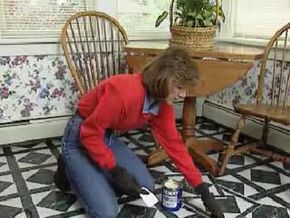Polyurethane adhesives provide extremely strong bonding. Even before the adhesive dries and seals completely, the initial bond is strong enough that clamps and other types of securing instruments are unnecessary. This makes manufacturing and construction processes both simpler and cheaper. Threadlocker polyurethane adhesives and sealants are able to lock threads against loosening caused by heavy vibrations and loads. They help to distribute weights over the length of the bond, which effectively extends the life of the bond.
Polyurethane adhesives can be customized to suit the requirements of a particular industry. The car industry typically uses polyurethane adhesives for vehicle interiors and to bond windshields. Wood chips or sawdust can be mixed with polyurethane adhesives to make fiberboard. Conveyor belts are closed with the help of polyurethane adhesives.
Advertisement
Polyurethane adhesives tend to be very flexible and durable, and they provide good impact resistance. They vary in degree of resistance to heat and chemicals, as well as in the level of their bulk flexibility. They can be used to seal fuel tanks and are not damaged by prolonged periods of high temperatures. This type of polyurethane adhesive is flame-resistant.
According to the ChemQuest Group, Inc. [source: Lohman ], polyurethane adhesives are increasingly used by the home construction industry. This is because these adhesives are able to bond many types of substrates, including glass, plastic, wood and concrete. Two-part polyurethane adhesives are typically used for bonding ceiling drywall to roof rafters. The first stage works immediately to avoid a caving-in effect on vertical surfaces, while the second stage provides for a strong and permanent seal. Moisture-curable polyurethane adhesives are frequently used for subflooring and for finish carpentry such as on staircases and cabinets. Seasonal changes can cause wood to contract and expand, but the application of a polyurethane adhesive can prevent separation cracks from forming.
Advertisement


